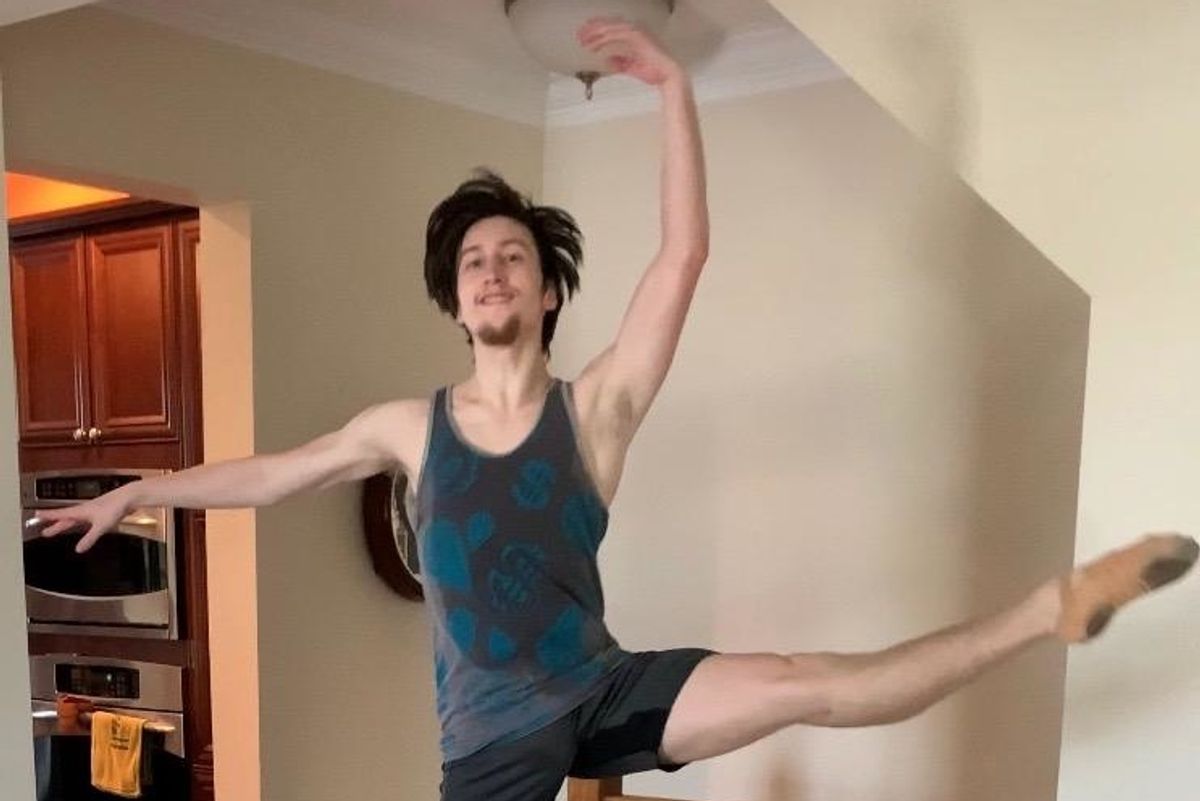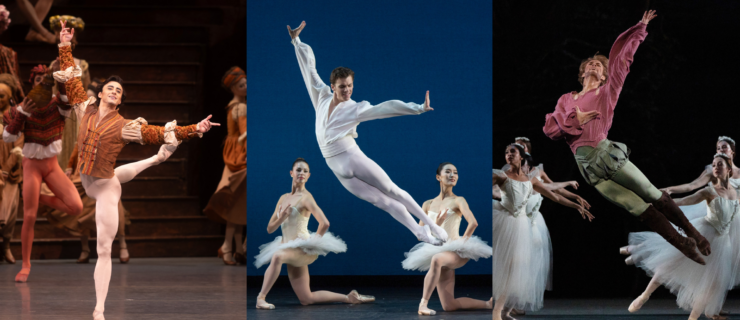With No Live Performances in Sight, Some Companies Resume Rehearsals via Zoom
Ballet companies are in a bizarre holding pattern right now. With studios and theaters shut down indefinitely due to the coronavirus pandemic, how do they keep the repertoire alive and dancers in shape? A handful of companies, including Pennsylvania Ballet and Dance Theatre of Harlem, are pressing on with rehearsals, even with no confirmed performances.
“When you think of rehearsing remotely, with no space and spotty internet, how beneficial is that going to be?” asked Nicholas Patterson, a corps de ballet member with Pennsylvania Ballet. “But it’s been a different kind of rehearsing. The tools they’re giving us really help.”
Patterson says it’s been a struggle to find some normalcy since the virus hit in mid-March, but that when rehearsals began again at the end of April, it was almost like old times. “It was nice to get back to the routine of a typical working day, class and then rehearsals,” he says. “Even if it has a new set of challenges.”

Courtesy McDaniel
Rehearsing in Makeshift Home Studios
Patterson returned to his hometown of Richmond, Virginia, where there’s more space to rehearse virtuosic ballets like Stanton Welch’s Clear. With the marley squares the company provided, he’s able to move full out—sort of. “I can jump and turn in place, but I can’t travel,” says Patterson. “You keep having to stop and back up to stay on the marley and on camera. It limits the flow of the rehearsal somewhat.”
Christopher Charles McDaniel
of Dance Theatre of Harlem built a home studio in a spare room that most quarantined dancers would be envious of. With 8 feet by 8 feet of sprung marley floor, he’s been enjoying a busy Zoom rehearsal schedule. “The building of the studio inspired me to work and push myself like I’m in a normal situation,” he says.
DTH’s Crystal Serrano, however, lives in a space that is likely familiar to dancers in big cities: a small New York City apartment with roommates, and neighbors who complain of the noise from pointe shoes. Because of this, she participates in classes and rehearsals without turning on her video camera. “With my camera off, I’m more at ease to take in the work without having judgement from people, or myself, when I’m dealing with less than ideal conditions,” she says. “They have to trust I’m doing the work and absorbing the material.”

Courtesy Serrano
Learning and Refining Choreography
Group work and partnering are obviously challenging, if not impossible, to work on via Zoom. Rehearsal directors and choreographers have had to find ways to make individual work beneficial in new ways. Patterson says that when rehearsing Clear in the studio, he relied on visual cues. On Zoom, he has to master the challenging counts of the music. “We dissected everything count by count, so everyone knew for themselves when to exit, enter, point their foot, look up, everything,” he says. “When we get back to the studio, we’ll be in unison and on the same page in a way we weren’t before.”
Nicholas Blanc, a ballet master at Joffrey Ballet, contributed choreography to a video by a local TV station celebrating Chicago artists staying at home. He filmed himself dancing the phrase of choreography, sent it to the Joffrey dancers to learn, then held coaching sessions on Zoom. The sessions provided an opportunity to improve his verbal communication. “For the dancers not to confuse left and right, I sometimes had to run the rehearsal with my back to the camera,” says Blanc. “It’s already hard to see them, so you have to be so much more detailed in what you say.”
Blanc was happy with the result, but he’s not rushing to choreograph over Zoom again. “It’s a great temporary tool, but it’s not something that I’m so thrilled about,” he says. “Human contact is so important. Zoom can’t reproduce that.”
Keeping Motivated
DTH has been rehearsing repertoire the dancers are familiar with by refining counts and details dancer by dancer. But they’ve also been rehearsing other work to keep the dancers in shape, such as classical variations, that they may not perform.
Serrano, who is one of a few company dancers that rehearses off camera, says that it’s changed what she aims to get out of a rehearsal. “It’s scary not to have the feedback of the person at the front of the room. We are so conditioned to that as dancers,” she says. “I’m really taking this time to work for myself, not needing to show that I’m capable or get the attention.”
But still, rehearsing with no performance in sight is a challenge. “It’s painful to get in really good shape and master choreography but not know what for,” says McDaniel. “But we don’t want to put our careers on hold. We want to be ready to come back.”





